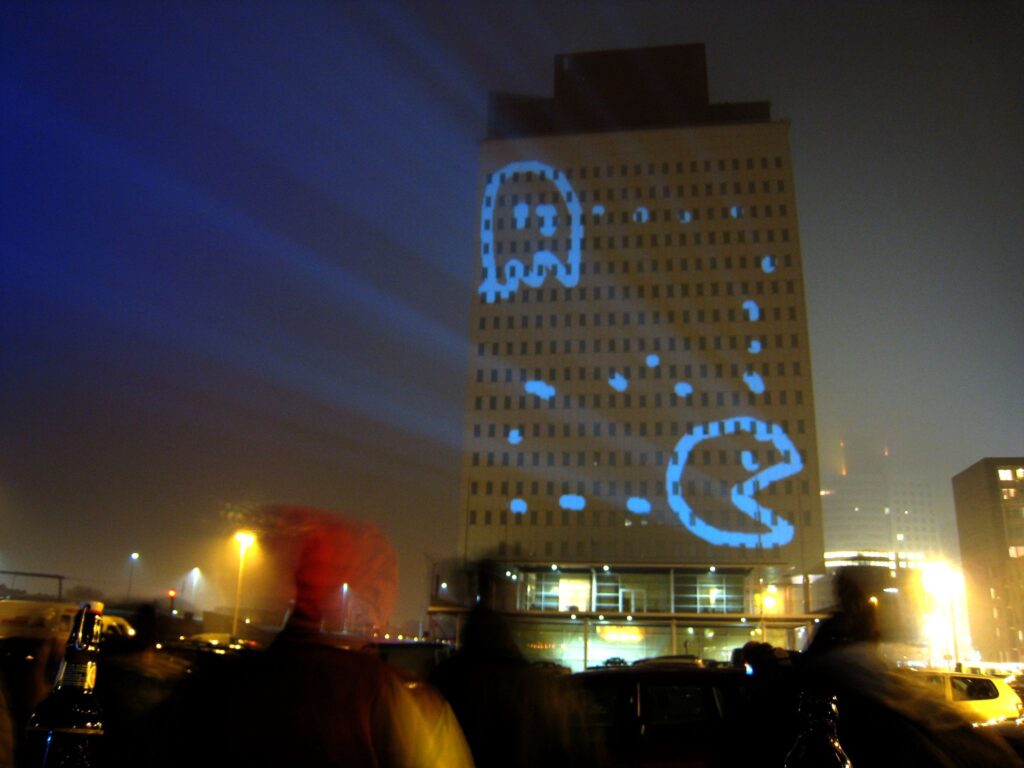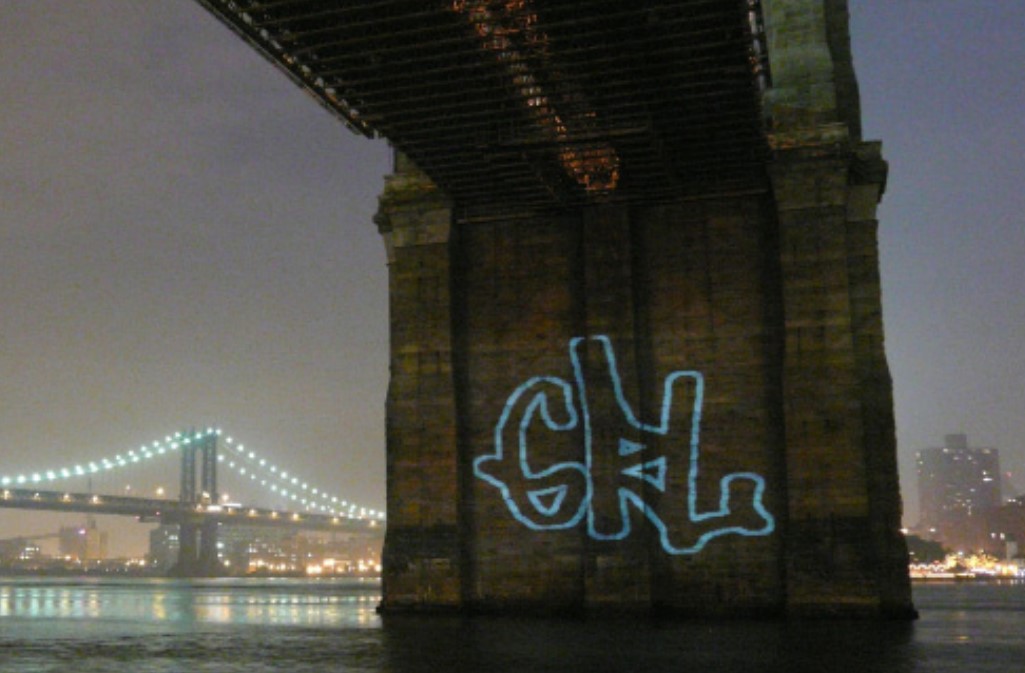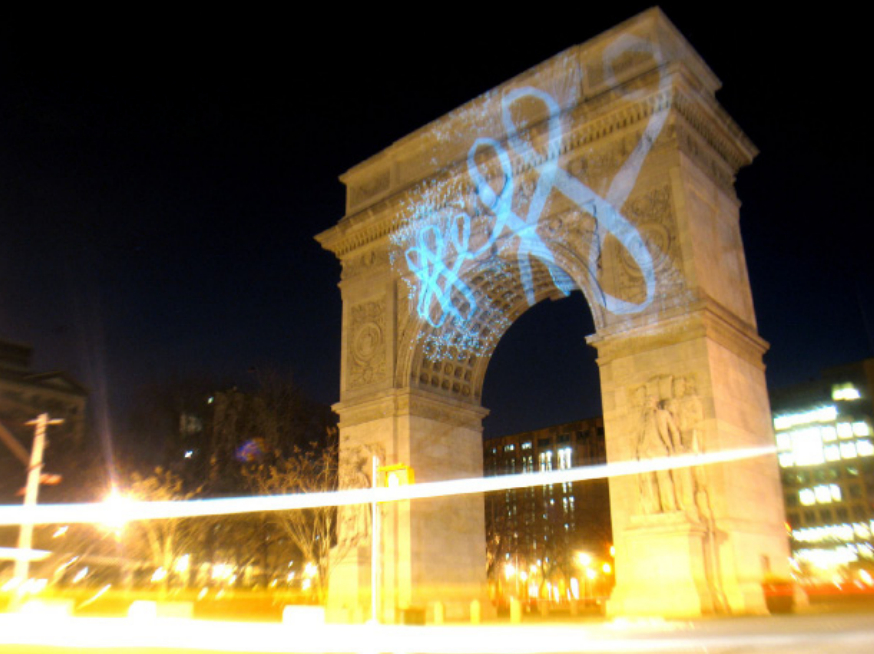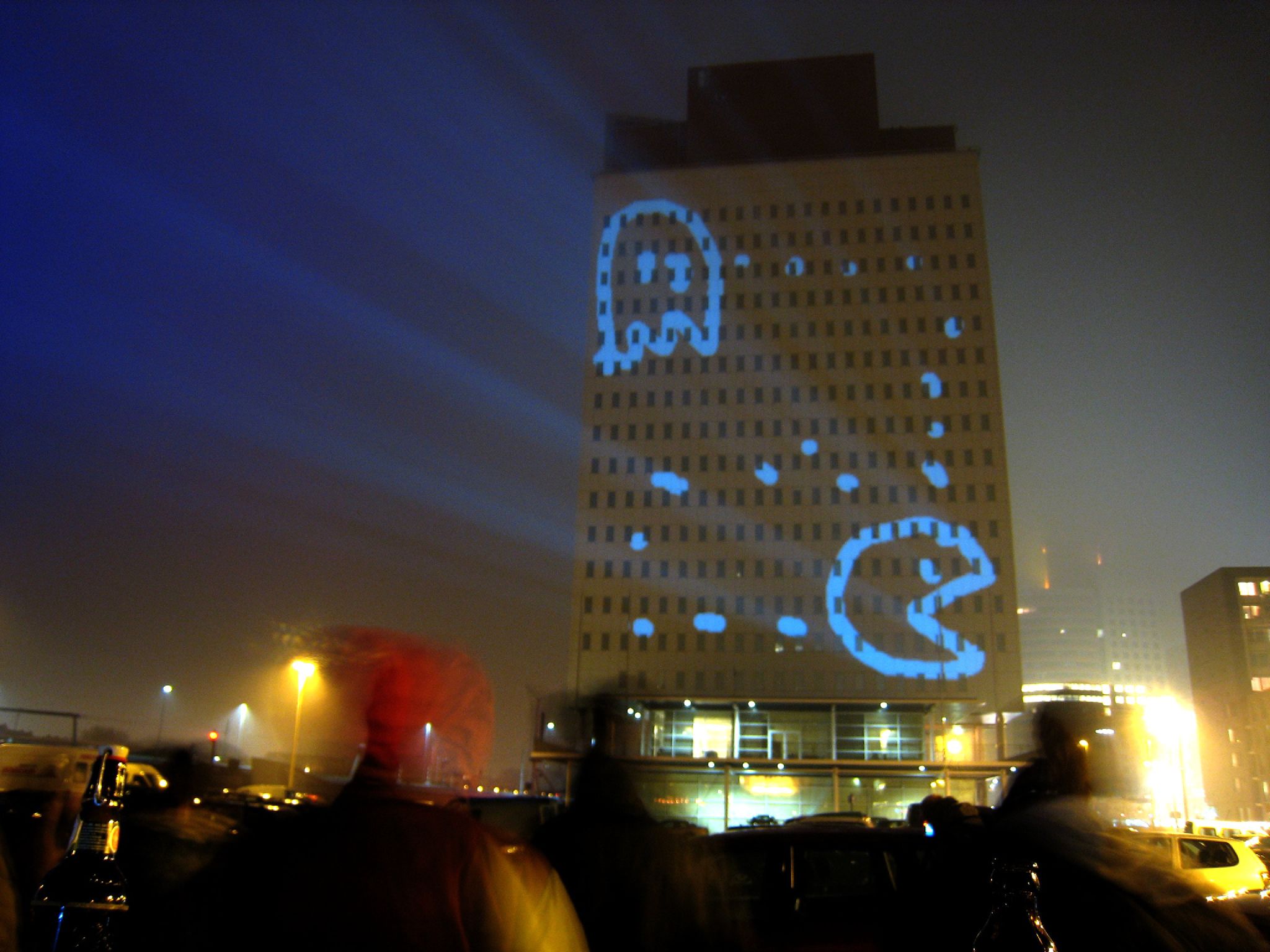| Location | Worldwide |
| Date | 2005-present |
| Participants | 11 Graphiti Research Lab chaptersin Amsterdam, Australia, Brazil, Canada, Colorado, Houston, Kyoto, Luxembourg, Mexico, Utah, Vienna |
| Design Collaborative | Graffiti Research Lab |
| Product Design | Evan Roth, James Powderly |
| Collaborators | Mike Baca, Eyebeam OpenLab, Free Art and Technology (F.A.T. Lab), Steve Lambert, Todd Polenberg, Theo Watson, Bennet Williamson, Jamie Wilkinson |

Laser Tagger: Rotterdam, Netherlands, 2007 Photo: Evan Roth, James Powderly, Theo Watson/Graffiti Research Lab
Graffiti has long been an artistic form of expression for the masses to vent their political frustrations and personal longings. Graffiti Research Lab is inventing innovative applications that fuse off-the-shelf technology with a sense of daring and humor. “It was never about us [the members] putting stuff up,” says founder Evan Roth. “Graffiti Research Lab is about making tools for people we thought were underrepresented in the city. A lot of the time that meant graffiti writers, but it also includes activists and people who just want to have fun.”
The L.A.S.E.R. Tag system requires equipment but is accessible for an enterprising young activist. The open-source code (available at Theo Watson’s blog) feeds into a laptop attached to a projector and camera, controlled by a 60-megawatt laser, described on the website as “super illegal and very dangerous.” When moving the laser pointer on the designated surface, the camera tracks its position, recording the movements and beaming them back onto the building via the projector.
The result is graffiti without the permanent markings that enrage city officials and property owners. “The press is more willing to report on a project because that act of vandalism has been removed,” says Roth, “But removing the destructive aspect was never the point for James and I.” But the L.A.S.E.R. Tag system also minimizes the danger to graffiti writers: they are much less likely to be arrested and they can make a big statement without trespassing, and climbing dangerous structures like billboards and silos. The set-up, which takes time and help from multiple people, turns the act of writing into a party, turning it into performance art on the scale of a 10-story building.
Within the graffiti community, there are various opinions on this new tool. Some feel that not leaving a mark makes the project a toy, but there is another side that says ‘Bigger is better’. “You can see this debate going on inside [a graffiti artist’s] head,” says Roth, “They are thinking ‘On the one hand, this is impermanent, but on the other, I just wrote my name five stories tall in five seconds.”


L.A.S.E.R. Tagger setup, Rotterdam, Netherlands, 2007. Photo: Evan Roth, James Powderly and Theo Watson/Graffiti Research Lab
“I <3 Roma” tagged on the Roman Colosseum, Rome, Italy, 2008 Evan Roth and James Powderly/Graffiti Research Lab


Underneath a bridge, New York City, 2007. Photo: Evan Roth and James Powderly with 2EASE/Graffiti Research Lab
Graffiti Analysis Project, a precursor to L.A.S.E.R. Tag, New York City, 2005. Photo: Evan Roth/writing by HELL
















READ OR LEAVE A COMMENT